Korean cosmetics fly off shelves on Amazon, other e-commerce platforms
The renewed popularity of K-beauty in the US and Japan is led by indie brands with no offline outlets
By Sep 26, 2024 (Gmt+09:00)
Samsung steps up AR race with advanced microdisplay for smart glasses


When in S. Korea, it’s a ritual: Foreigners make stops at CU, GS25, 7-Eleven


Maybe Happy Ending: A robot love story that rewrote Broadway playbook


NPS yet to schedule external manager selection; PE firms’ fundraising woes deepen


US auto parts tariffs take effect; Korea avoids heavy hit


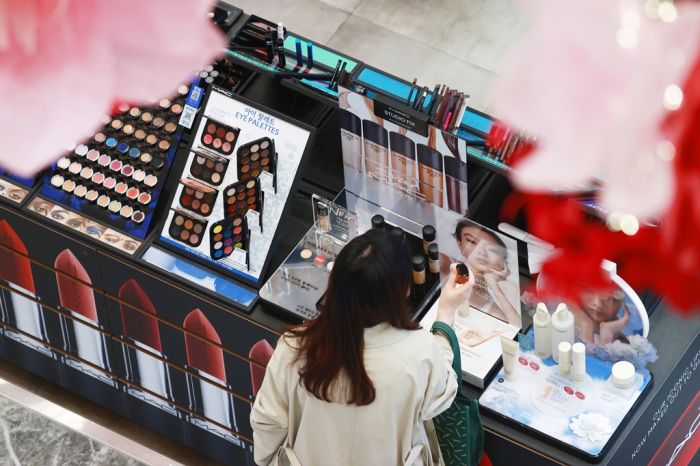
South Korean cosmetics are top picks among beauty products on Amazon.com and other global e-commerce platforms amid the growing popularity of K-beauty products worldwide, government data showed.
The strong sales of Korean beauty products are led by “indie brands” with no or few offline outlets, thus marketing only online. Their popularity is so high that online shopping malls compete to attract Korean sellers to their websites.
According to the Korea Customs Service on Wednesday, sales of Korean products, including cosmetics and fashion goods, on overseas online shopping platforms reached $1.77 billion in the first eight months of the year, up 23.5% from the year-earlier period.
Transaction volumes rose 24.8% on-year to 36.58 million, government data showed.
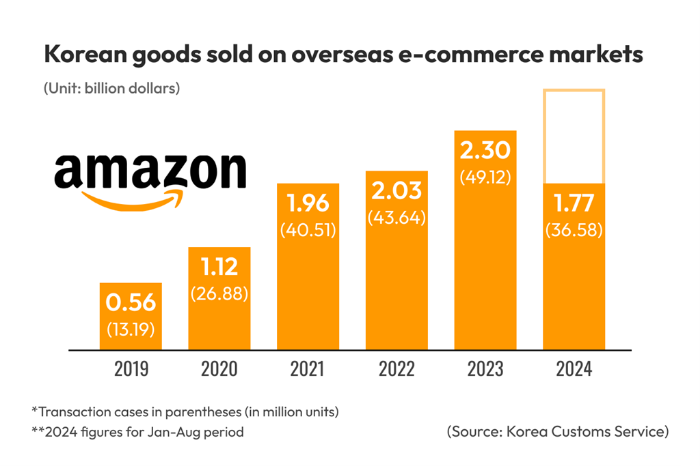
The total Korean goods sales on overseas e-commerce malls are forecast to reach $2.5 billion this year.
Industry data showed the proportion of “K-beauty” products of all cosmetics goods sold on overseas online platforms such as Amazon, eBay Japan and Shopee ranges from 60% to 80%.
KOREAN BEAUTY SELLERS COURTED BY E-COMMERCE OPERATORS
With rising consumer demand for Korean goods, competition among global e-commerce platform operators to attract K-beauty brands has become fierce.
Amazon is holding its Prime Big Deal Day on Oct. 8-9, an extensive sales event for its paid Prime members.
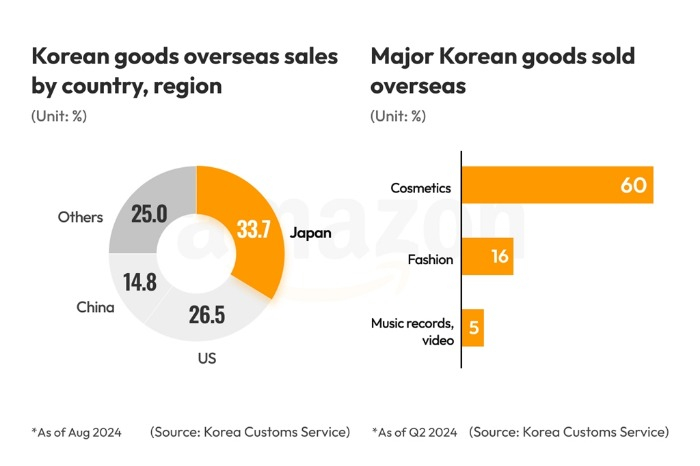
Since last year, several K-beauty products have ranked top in cosmetics sales during the Prime Day event, with brands like Cosrx Inc. leading the way.
The company’s essence product first made it into the Top 100 list in 2022 and claimed the top spot in the beauty category last year.
Other Korean bestsellers on Amazon include Beauty Selection, VT Co., Goodal, Tirtir, Anua, d'Alba and Beauty of Joseon.
Chinese e-commerce giant AliExpress plans to launch a “global selling program" to attract Korean companies, offering them unprecedented incentives such as site use fee waivers for five years.
INDIE BRANDS LEAD THE WAY
The surge in direct overseas sales of Korean products on e-commerce platforms has been led by small- to medium-sized Korean cosmetics companies known as "indie brands."

Mostly emerging in the 2010s, these brands used low-cost, high-efficiency marketing tactics through social media platforms such as Instagram and TikTok, expanding their market from China to developed countries, including the US and Japan.
Analysts said they are leading the K-beauty boom by diversifying their offerings beyond basic skincare to color cosmetics and beauty devices.
Unlike large cosmetics brands, indie brands typically don’t operate offline stores.
Entering department stores or duty-free shops is challenging for them. Even if they manage to do so, they cannot afford the high fees, which can be around 30% of the selling price, according to industry officials.
CJ Olive Young Corp., Korea’s top beauty store chain, has capitalized on such a gap, becoming a "holy land" for indie brands, which have been attracted by CJ’s low sales fees and generous marketing support.
More recently, some indie brands have begun directly selling overseas without going through CJ Olive Young.
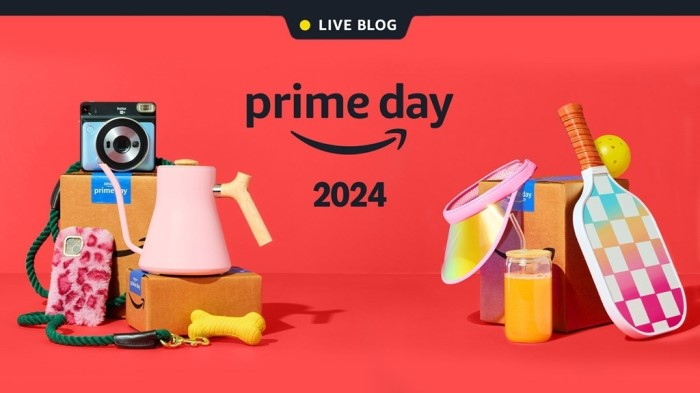
Notable examples include numbuzin and Anua, which became popular in Japan, and Cosrx, which went straight to the US market for overseas sales.
DIVERSIFICATION
Indie brands have diversified their product lineup from basic skincare to color cosmetics and beauty devices to achieve high growth rates.
Tirtir's "Red Cushion" is a prime example. It has earned high marks for its diverse color range that accommodates different skin tones and its long-lasting makeup.
With praises from overseas influencers, the product has become a "must-have.” Last year, Tirtir's sales reached 170 billion won ($128 million), a 39% increase from the previous year.
APR Co., a beauty devices seller, reaped 520 billion won in sales last year – a feat accomplished in a decade after its founding. About half of the sales came from exports. This year, the company aims for 700 billion won in sales.
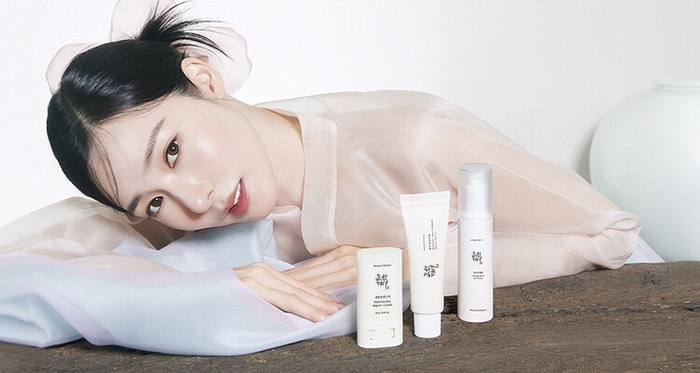
OUT OF CHINA
Expanding their export markets beyond China to the US, Japan and other countries has also been a key to their success.
In the 2010s, the K-beauty boom was largely driven by explosive demand from China, thanks to the so-called Korean Wave or Hallyu.
At duty-free shops in Korea and abroad, Chinese consumers swept Amorepacific Corp.’s Sulwhasoo brand line of products and the History of Whoo products by LG H&H Co., formerly LG Household & Health Care.
Japan accounted for the highest share of their overseas sales at 33.7% for the January-August period.
K-beauty products dominate the cosmetics sales rankings on the Qoo10 Japan platform, operated by eBay Japan.
Korean products account for 40% of imported cosmetics in Japan. In the US, their percentage stands at 26.5%, while in China it’s 14.8%.
Write to Jae-Kwang Ahn and Sun A Lee at ahnjk@hankyung.com
In-Soo Nam edited this article.
-
 Beauty & CosmeticsKorean cosmetics, Amazon Prime Day’s top beauty products
Beauty & CosmeticsKorean cosmetics, Amazon Prime Day’s top beauty productsAug 02, 2024 (Gmt+09:00)
1 Min read -
 Beauty & CosmeticsChina is LG H&H’s headache amid global K-beauty boom
Beauty & CosmeticsChina is LG H&H’s headache amid global K-beauty boomJul 26, 2024 (Gmt+09:00)
2 Min read -
 Beauty & CosmeticsAmazon to back K-Beauty’s broader global reach
Beauty & CosmeticsAmazon to back K-Beauty’s broader global reachJun 26, 2024 (Gmt+09:00)
3 Min read -
 Beauty & CosmeticsHeyday over for Amorepacific, LG Household in China’s beauty market
Beauty & CosmeticsHeyday over for Amorepacific, LG Household in China’s beauty marketJun 26, 2023 (Gmt+09:00)
3 Min read -
 Advertising & MarketingVietnamese MZers ensnared by K-beauty, K-fashion, K-everything
Advertising & MarketingVietnamese MZers ensnared by K-beauty, K-fashion, K-everythingOct 27, 2022 (Gmt+09:00)
2 Min read


